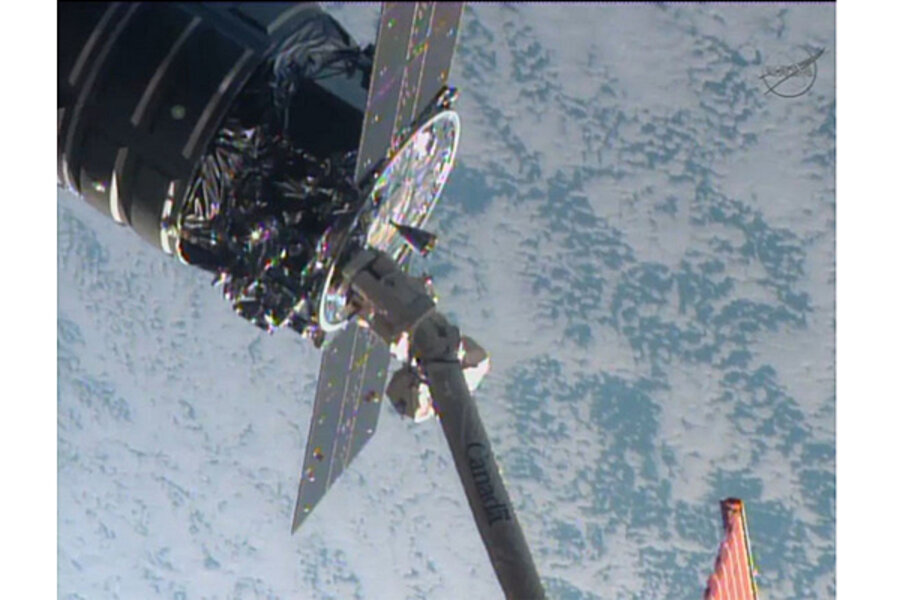Are we entering the age of private spaceflight?
Loading...
Two private American companies are now responsible for hauling cargo to the International Space Station.
Orbital Sciences' Cygnus spacecraft attached to the orbiting laboratory today by 8:44 a.m. EDT (1244 GMT), a first for the cargo ship. The rendezvous was nearly flawless, according to officials with NASA and the private company.
The historic arrival of the Cygnus spacecraft at the space station this morning (Sept. 29) makes Dulles, Va.-based Orbital Sciences the second private, American company to rendezvous with the station. [See photos from Orbital Sciences' 1st Cygnus test flight]
"It's certainly a great day to fly in space," Holly Ridings, NASA flight director, said during a news conference today.
This first spaceflight for Cygnus demonstrates that the spacecraft can safely fly and deliver supplies to the International Space Station as part of a contract with NASA. Orbital Sciences penned a $1.9 billion deal with the space agency to fly eight cargo missions to the station using Cygnus and the company's Antares rocket. The first of those contracted missions is set to launch in December.
Hawthorne, Calif.-based spaceflight company SpaceX was the first private company to successfully send their Dragon capsule to the space station under a deal with NASA. SpaceX is contracted to launch 12 resupply missions to the station using Dragon and its Falcon 9 rocket.
SpaceX — owned by billionaire entrepreneur Elon Musk — is expected to launch its third cargo mission in January.
"We now have two new launch vehicles. [We now have] two new state of the art autonomous spacecraft capable of carrying cargo to manned destinations, human destinations in space," Alan Lindenmoyer, chief of NASA's commercial crew and cargo program, told the press. "[We now have] two new launch pads, two new mission controls and the entire infrastructure to support these new systems."
Cygnus launched atop an Antares rocket on Sept. 18 from NASA's Wallops Flight Facility on Wallops Island, Va., carrying 1,543 pounds (700 kilograms) of supplies to the station. The spacecraft is designed to hold up to 4,409 pounds (2,000 kg) of cargo.
"Today, we delivered more cargo on a commercial basis than has ever been delivered to the space station," Frank Culbertson, Orbital Sciences' executive vice president, told reporters. "I know the crew is going to be very happy when they get the hatch open and get a chance to see all of the things that are in there and all the things that will keep their mission going."
The Cygnus spacecraft is expected to detach from the station on Oct. 22 after about three weeks in port. The spaceship will burn up in Earth's atmosphere after it leaves the orbiting outpost like the disposable unmanned Russian, European and Japanese spacecraft that visit the station regularly.
Currently, SpaceX's Dragon capsule is the only robotic craft that can take supplies from space to Earth intact.
Astronauts on the space station are expected to open the hatches between the outpost and Cygnus early Monday (Sept. 30). SPACE.com is providing complete coverage of Orbital's first Cygnus test flight to the International Space Station.
Follow Miriam Kramer @mirikramer and Google+. Follow us @Spacedotcom, Facebook and Google+. Original article on SPACE.com.
- Private Antares Rocket & Cygnus Spacecraft Explained (Infographic)
- Cygnus Spacecraft Captured By Space Station | Video
- Gallery: Orbital Sciences' Cygnus Spaceship & Antares Rocket
Copyright 2013 SPACE.com, a TechMediaNetwork company. All rights reserved. This material may not be published, broadcast, rewritten or redistributed.





